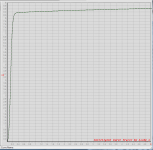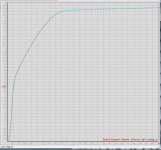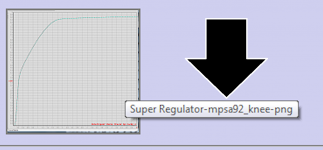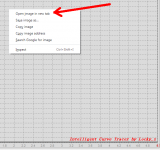Newark has them bc546 in stock.
Newark has the btf and bta versions in stock in large amounts for very low cost 2 to 3 cents each . One could order a hundred and match them for little cost. 😎I can understand the difficulty to source parts. For instance, we here in Europe use the BC546 etc. series for almost anything that needs a small signal transistor, but they are unknown elsewhere on the world.
Specifying 'or equivalent' only is useful if you know other parts and relevant specs.
So here we can definitely do better.
Jan
The opamp, reference and feedback network consumes rather much so there you have load already.Does the Super regulator required minimum loading current to work in stable? desire to build one for op amp I/V stage (+/- 15VDC) supply which draw 100-150mA only
These two transistors, used with great success in the Denoiser project, simulate quite well in LTSpice with the super-regulator. And are available at Mouser
.MODEL ZTX951 PNP IS=1.3766E-12 NF=1.013 BF=187 IKF=5.0 VAF=66.3 +ISE=1.4E-13 NE=1.41 NR=1.0099 BR=56 IKR=0.9 VAR=33 ISC=1.7E-12 +NC=1.4 RB=0.029 RE=0.020 RC=0.0255 CJC=287E-12 MJC=0.4522 +VJC=0.4956 CJE=1.15E-9 TF=0.83E-9 TR=20E-9
.MODEL ZTX851 NPN IS=1.0085E-12 NF=1.0001 BF=240 IKF=5.1 VAF=158 +ISE=2E-13 NE=1.38 NR=0.9988 BR=110 IKR=5.5 VAR=46 +ISC=4.6515E-13 NC=1.334 RB=0.025 RE=0.018 RC=0.015 +CJC=155E-12 MJC=0.4348 VJC=0.6477 CJE=1.05E-9 +TF=0.79E-9 TR=24E-9
What do you think, Jan?
.MODEL ZTX951 PNP IS=1.3766E-12 NF=1.013 BF=187 IKF=5.0 VAF=66.3 +ISE=1.4E-13 NE=1.41 NR=1.0099 BR=56 IKR=0.9 VAR=33 ISC=1.7E-12 +NC=1.4 RB=0.029 RE=0.020 RC=0.0255 CJC=287E-12 MJC=0.4522 +VJC=0.4956 CJE=1.15E-9 TF=0.83E-9 TR=20E-9
.MODEL ZTX851 NPN IS=1.0085E-12 NF=1.0001 BF=240 IKF=5.1 VAF=158 +ISE=2E-13 NE=1.38 NR=0.9988 BR=110 IKR=5.5 VAR=46 +ISC=4.6515E-13 NC=1.334 RB=0.025 RE=0.018 RC=0.015 +CJC=155E-12 MJC=0.4348 VJC=0.6477 CJE=1.05E-9 +TF=0.79E-9 TR=24E-9
What do you think, Jan?
These could be worth a try since they has a fT = 120 MHz but they are a bit slower than the BC types.
Two remarks:
1) The noise properties of the current source transistor plays no role at all in the overall noise properties, so many transistors are able to do the job, and the ZTX is no exception but it’s very low noise offers no specific advantage.
2) There is a serious error in the .model files where Rb should be 2.0 for the ZTX851 and 2.5 for the ZTX951.
Hans
1) The noise properties of the current source transistor plays no role at all in the overall noise properties, so many transistors are able to do the job, and the ZTX is no exception but it’s very low noise offers no specific advantage.
2) There is a serious error in the .model files where Rb should be 2.0 for the ZTX851 and 2.5 for the ZTX951.
Hans
Last edited:
One important characteristic of the current source transistor in the Jung-Didden Super Regulator, is its performance at low VCE. Attached below are two PNP transistors, hover your mouse over the ICE-versus-VCE plot to see the part_number which is embedded in the file name.
One of these transistors makes an excellent current source at low VCE. The other one defecates the bedsheets, I'm afraid.
If in doubt, read the diyAudio thread about keantoken's "K-multiplier" and pay close attention to every paragraph which mentions quasisaturation. Then use the BC transistor types which he recommends. They're not quite as nice as the one attached below, but they cost a lot less money.
_
One of these transistors makes an excellent current source at low VCE. The other one defecates the bedsheets, I'm afraid.
If in doubt, read the diyAudio thread about keantoken's "K-multiplier" and pay close attention to every paragraph which mentions quasisaturation. Then use the BC transistor types which he recommends. They're not quite as nice as the one attached below, but they cost a lot less money.
_
Attachments
Mark,
Hovering doesn’t reveal the name of this horrible transistor that you showed.
Is this by any chance the point contact transistor that Bell Labs invented in 1948.
Never seen such a bad performing semiconductor.
Hans
Hovering doesn’t reveal the name of this horrible transistor that you showed.
Is this by any chance the point contact transistor that Bell Labs invented in 1948.
Never seen such a bad performing semiconductor.
Hans
Hans,
hold you mouse over image to reveal the name of this horrible MPSA92 transistor 🙂
Oh, MPSA42 is even worse, but it's NPN. Even those old black glass OC.. germanium transitors measure better.
hold you mouse over image to reveal the name of this horrible MPSA92 transistor 🙂
Oh, MPSA42 is even worse, but it's NPN. Even those old black glass OC.. germanium transitors measure better.
Last edited:
> .. in fact, the only important source for noise is the opamp.
So the voltage reference does not matter ? 😕
Why pay extra then for LM329 ?
Happy New Year,
Patrick
So the voltage reference does not matter ? 😕
Why pay extra then for LM329 ?
Happy New Year,
Patrick
Here is what I see on Windows 7
_
I can Hover as much as I like in Windows10 + Edge , but no result. 😀
In fact the MPSA92 is a 200V high voltage transistor, not the first choice for an application like the super regulator, but nevertheless I'm surprised by it's strange low voltage behaviour.
But also keep in mind that the super regulator in it's current form is not a low drop-out regulator and that it is better IMO to stay on the safe side with 2Volt Vce on this current source transistor.
Hans
I saw a derivative of this thread further on led by Walt Jung.
Apart from the fact that for some reason he seemed quite irritated and left the thread, he was talking about a SR2020.
Is there anything to tell about that version, or is it just a swap of op-amps.
Hans
Apart from the fact that for some reason he seemed quite irritated and left the thread, he was talking about a SR2020.
Is there anything to tell about that version, or is it just a swap of op-amps.
Hans
In fact the MPSA92 is a 200V high voltage transistor, not the first choice for an application like the super regulator, but nevertheless I'm surprised by it's strange low voltage behaviour.
I'm sorry that your OS+Browser won't display the filename upon hover. The most obvious workaround is to simply open the I-versus-V image in its own browser tab or browser window, and then read the filename from the navigation bar of that window. See figure 1 and figure 2 below.
When you check the datasheet, you'll discover that the MPSA92 is actually a 300 volt transistor. In order to make a fair comparison, I chose the other ("good at low VCE") transistor in the plots, to be a four hundred volt device. Now readers can see that it's wrong to assume all high voltage transistors are terrible at low VCE.
_
Attachments
Mark,
Did you make these measurements and if so in what setup.
More than those mediocre low voltage properties I’m interested why there is still a significant slope beyond 2Volt Vce, indicating a rather small value for the early voltage Va in the order of ca.150 Volt, not a thing that I would expect for a low power high voltage transistor.
Hans
Did you make these measurements and if so in what setup.
More than those mediocre low voltage properties I’m interested why there is still a significant slope beyond 2Volt Vce, indicating a rather small value for the early voltage Va in the order of ca.150 Volt, not a thing that I would expect for a low power high voltage transistor.
Hans
Hans, send me your mailing address via PM and I'll ship you 3 pieces of each device type. Then you'll have complete control over the entire testing protocol + environment, and can employ whichever equipment gives you the greatest confidence of correct results.
- Home
- The diyAudio Store
- Super Regulator




